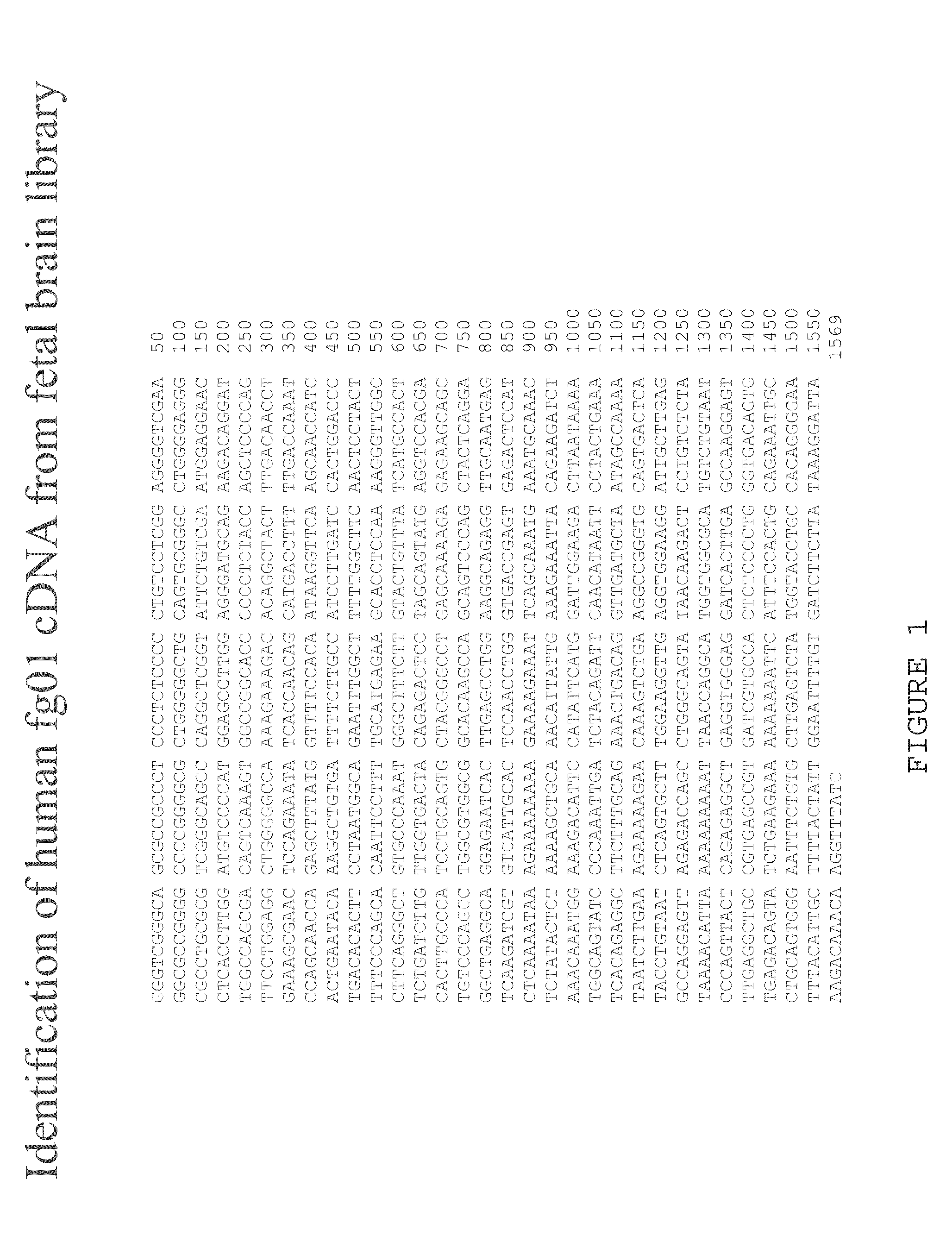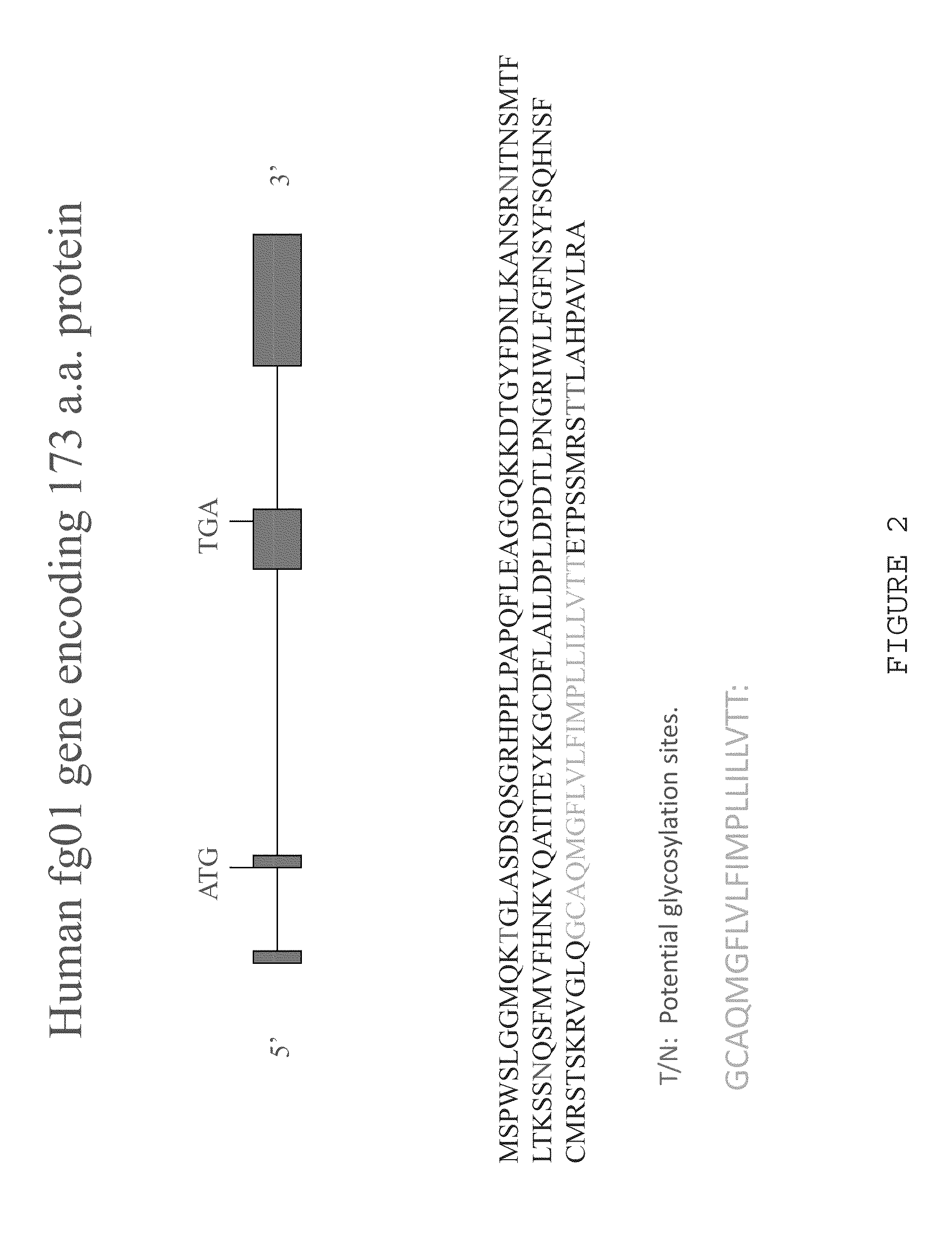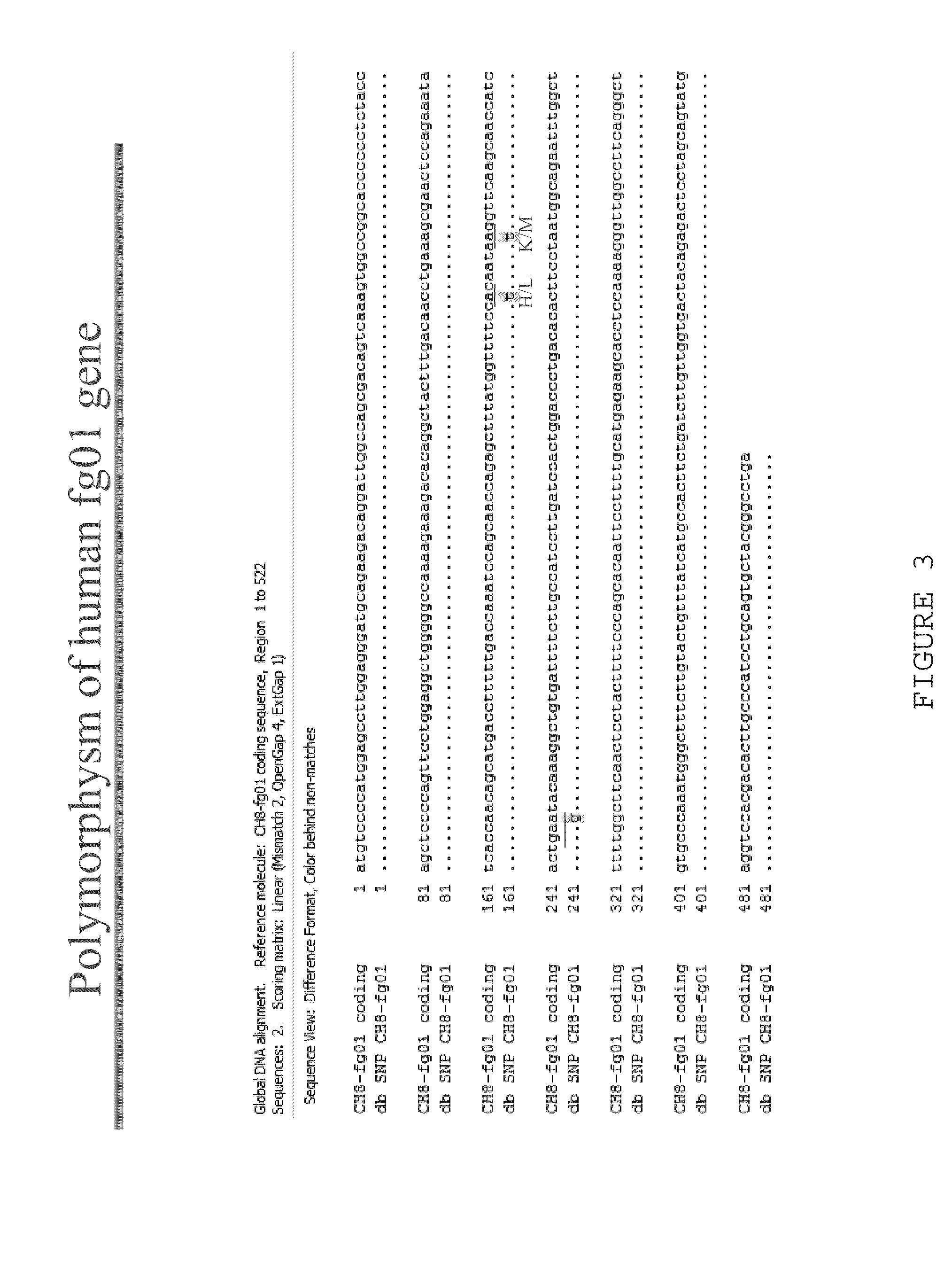Human fg01 gene and its applications
a technology of human fg01 and its application field, which is applied in the field of human gene, can solve the problems of not offering a human treatment method, ad patients' resources, and the inability to meet human needs, so as to prevent the phosphorylation of tau, promote the production of camp, and reduce the production of a
- Summary
- Abstract
- Description
- Claims
- Application Information
AI Technical Summary
Benefits of technology
Problems solved by technology
Method used
Image
Examples
Embodiment Construction
[0026]To identify the human fg01 homolog, the human genome browser search indicated that a genomic DNA domain in human chromosome 8 shares relatively high homology with the mouse fg01 coding sequence. Although there is no human mRNA and EST sequence information available in that locus in GeneBank, the 5′ and 3′ cDNA sequences were amplified by PCR from a human fetal brain cDNA library constructed in a cloning vector using the human chromosome 8-specific primers along with the primers designed from cDNA cloning vector. A 1569-bp full-length cDNA sequence was reconstituted from the PCR products. The cDNA sequence was also confirmed by a separate RT-PCR from a total RNA of human fetal brain.
[0027]For clarity, the non-truncated or human fg01 gene and encoded protein are discussed first, herein below. Thereafter, this application addresses the truncated human fg01 protein on chromosome 5, and its corresponding uses.
Human fg01 (Transmembrane Form)
[0028]The cDNA sequence perfectly matches ...
PUM
| Property | Measurement | Unit |
|---|---|---|
| conformational structure | aaaaa | aaaaa |
| nucleic acid | aaaaa | aaaaa |
| length | aaaaa | aaaaa |
Abstract
Description
Claims
Application Information
 Login to View More
Login to View More - R&D
- Intellectual Property
- Life Sciences
- Materials
- Tech Scout
- Unparalleled Data Quality
- Higher Quality Content
- 60% Fewer Hallucinations
Browse by: Latest US Patents, China's latest patents, Technical Efficacy Thesaurus, Application Domain, Technology Topic, Popular Technical Reports.
© 2025 PatSnap. All rights reserved.Legal|Privacy policy|Modern Slavery Act Transparency Statement|Sitemap|About US| Contact US: help@patsnap.com



